Two-ply yarn is much stronger than single ply, although it weighs less than a single of the same diameter. The counterbalancing twist of the plying process holds all the singles at rest by the two singles pushing against one another. When this happens, they relax and therefore expand. This is why a plied yarn is efficient; it is bigger and lighter than the combined diameter of the singles held together unplied. Now that your singles are wound into a plying ball, you are ready to ply on a hand spindle:
Put the plying ball in a basket.
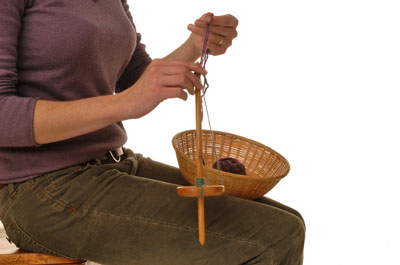
This keeps it from rolling away.
Tie the two singles to the leader with an overhand knot. Wrap the two ends and the leader around your finger, slip the loop off your finger, pull all the threads through the loop, and pull tight.
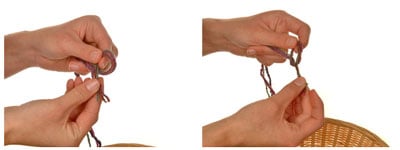
Two-plies are traditionally used for weaving. Their corrugated surface locks together to make a strong, lightweight fabric.
Hold up the spindle as if you were spinning.
A plied yarn is made by spinning the singles together in the opposite direction to the way they were first spun. Your two singles have been created by spinning to the right. To ply them together, you need to twist the spindle so that it turns to the left.
Hold the singles between the thumb and index finger of the fiber hand.
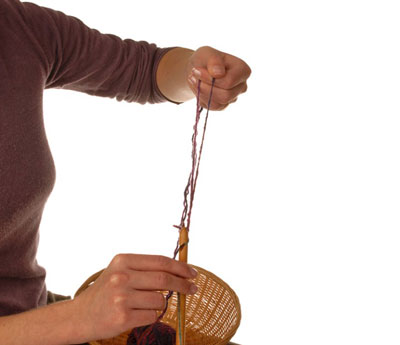
Leave about 10 inches of singles between your hand and the spindle.
With your spinning hand, reach down and give the spindle a firm twist to the left.
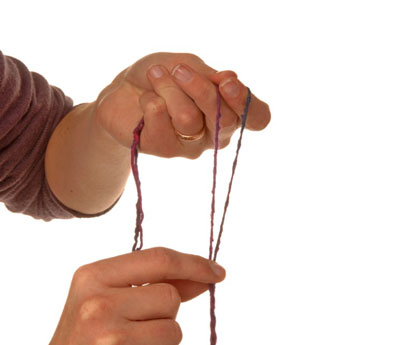
Be patient! It may feel like being a beginner again for a little while. You need a few new muscles to twist the spindle to the left easily, but these will develop quickly.
With your spinning hand, use your thumb and index finger to pinch off the singles about 4 inches from the spindle.
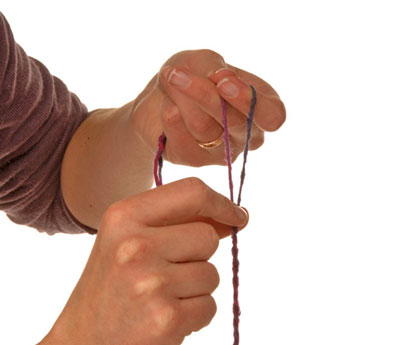
Let the twist build up behind your fingers, just like you did when you were spinning fiber. When you can feel the twist behind your fingers, move them slowly and evenly up toward the fiber hand. Let the twist follow your fingers like a puppy.
The slower you move your fingers, the more twist the yarn will have; the faster you move your fingers, the less twist it will have.
Keep your fingers that are holding the singles gently pinched. The twist should not be able to slip behind these fingers.
When your hands meet, pinch off the singles with the spinning hand.
Relax the hand that is holding the singles.
Pull about another foot of fiber out of the plying ball, toward the spindle. Reach down and give the spindle another twist.
Pinch off with your spinning hand until the twist accumulates between your fingers and the spindle. When you have plied as long a length as you can, wind the plied yarn on to the spindle.

